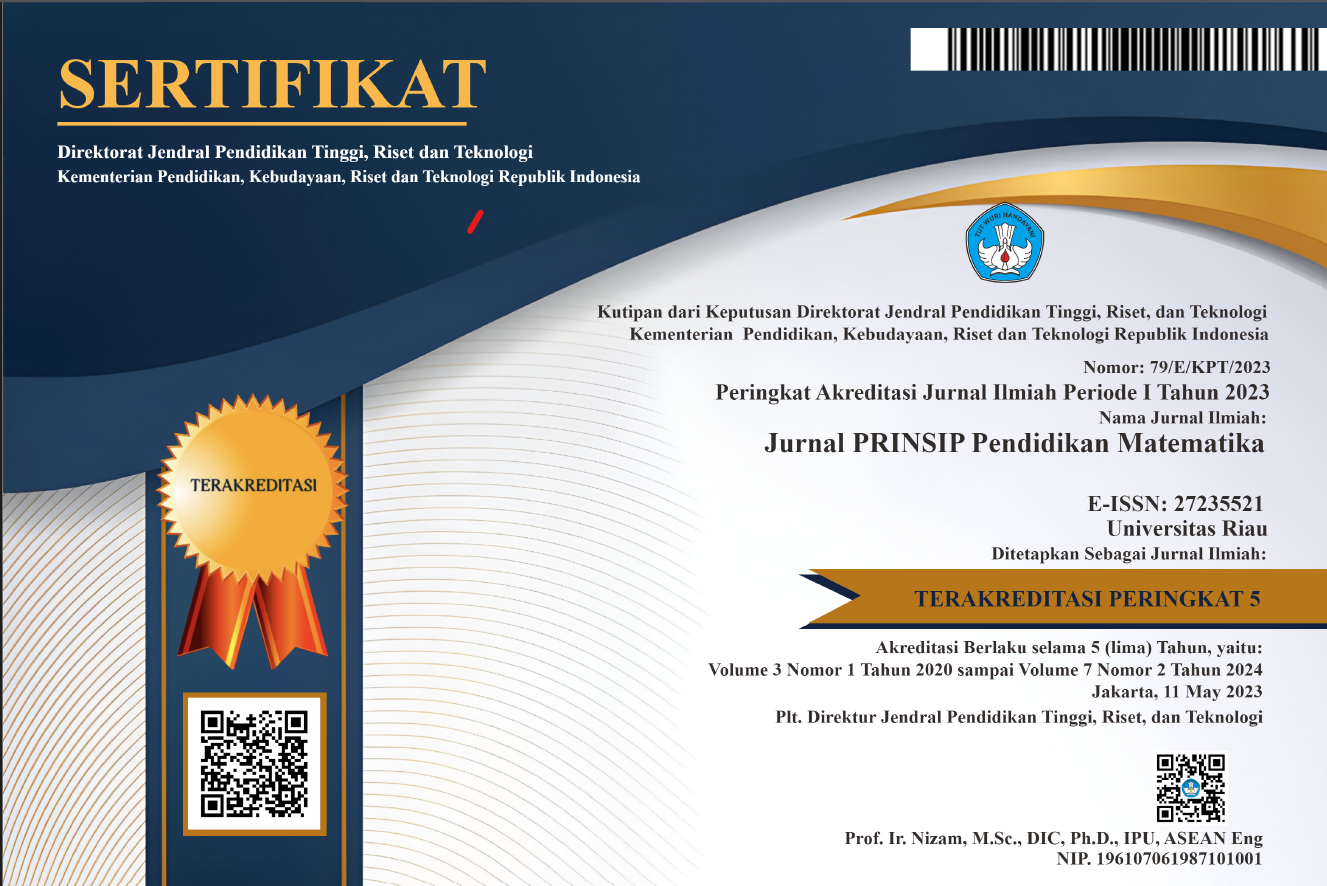DEVELOPMENT OF MATHEMATICS LEARNING DEVICES WITH PROBLEM BASED LEARNING (PBL) MODEL ON STATISTICS MATERIALS FOR SMP/MTs CLASS VIII
Abstrak
This study aims to produce mathematics learning tools in the form of a syllabus, lesson plans (RPP), and student worksheets (LKPD) based on a problem-based learning model on statistical material for class VIII junior high school students. This study uses a 4-D development model, which includes four stages, namely: (1) define; (2) design; (3) develop; and (4) dIsseminate. The research instrument used is the instrument of validity and practicality. The validity instrument is in the form of a validation sheet to assess the feasibility of the syllabus, lesson plans, and LKPD. The practical instrument is in the form of a student response questionnaire to the use of LKPD. The learning tools that have been compiled are then validated by three validators and revised according to suggestions from the validators. The valid learning tools were then tested in small groups with the subject of 6 students of class VIII SMP. Based on the results of data analysis and discussion, mathematics learning tools in the form of syllabus, lesson plans and LKPD with a problem-based learning model on statistical material are considered very valid and very practical to be used by junior high school students of class VIII.
##plugins.generic.usageStats.downloads##
Referensi
Al-Tabany, T. I. B. (2014). Mendesain model pembelajaran inovatif, progresif, dan kontekstual: konsep, landasan, dan implementasinya pada Kurikulum 2013. Prenadamedia Group.
Arikunto, S. (2016). Prosedur penelitian suatu pendekatan praktik. Rineka Cipta.
Daryanto, Dwicahyono, A., & Purwanto, D. (2014). Pengembangan perangkat pembelajaran : (silabus, RPP, PHB, bahan ajar). Gava Media.
Ngalimun, Fauzani, M., & Salabi, A. (2018). Strategi dan model pembelajaran. Aswaja Pressindo.
Prastowo, A. (2015). Panduan kreatif membuat bahan ajar inovatif (VIII). Diva Press.
Putri, S. U., & Murni, A. (2021). Development of mathematics learning devices based on Problem-Based Learning on the material of Polyhedron to facilitate mathematics problem-solving ability for SMP/MTs students. Jurnal Prinsip Pendidikan Matematika, 4(1), 1–8. https://doi.org/https://doi.org/10.33578/prinsip.v4i1.93
Rusman. (2014). Model-model pembelajaran: mengembangkan profesionalisme guru (Edisi Kedua). PT Raja Grafindo Persada.
Siregar, H. M. (2019). Analisis Kesalahan Siswa dalam menyelesaikan soal tes kemampuan berpikir kreatif matematis materi Lingkaran. AKSIOMA: Jurnal Program Studi Pendidikan Matematika, 8(3), 497–507. https://doi.org/10.24127/ajpm.v8i3.2379
Solfitri, T., & Siregar, H. M. (2021). Developing integration techniques module to improve mathematical creative thinking ability in Integral Calculus. Jurnal PAJAR (Pendidikan Dan Pengajaran), 5(2), 296–305. https://doi.org/http://dx.doi.org/10.33578/pjr.v5i2.8221
Sukri, M., Syofni, & Siregar, S. N. (2017). Pengembangan perangkat pembelajaran matematika dengan model Pembelajaran Berbasis Masalah pada materi Perbandingan kelas VII SMP/MTs. Jurnal Online Mahasiswa (JOM) Bidang Keguruan Dan Ilmu Pendidikan, 4(2), 1–9.
Yendri, Y., Suanto, E., & Heleni, S. (2019). Pengembangan perangkat pembelajaran matematika dengan model Pembelajaran Berbasis Masalah pada materi Sistem Persamaan Linier Dua Variabel kelas VIII SMP/MTs. Jurnal Online Mahasiswa (JOM) Bidang Keguruan Dan Ilmu Pendidikan, 6(2), 169–179.
##submission.copyrightStatement##
##submission.license.cc.by-nc-sa4.footer##




